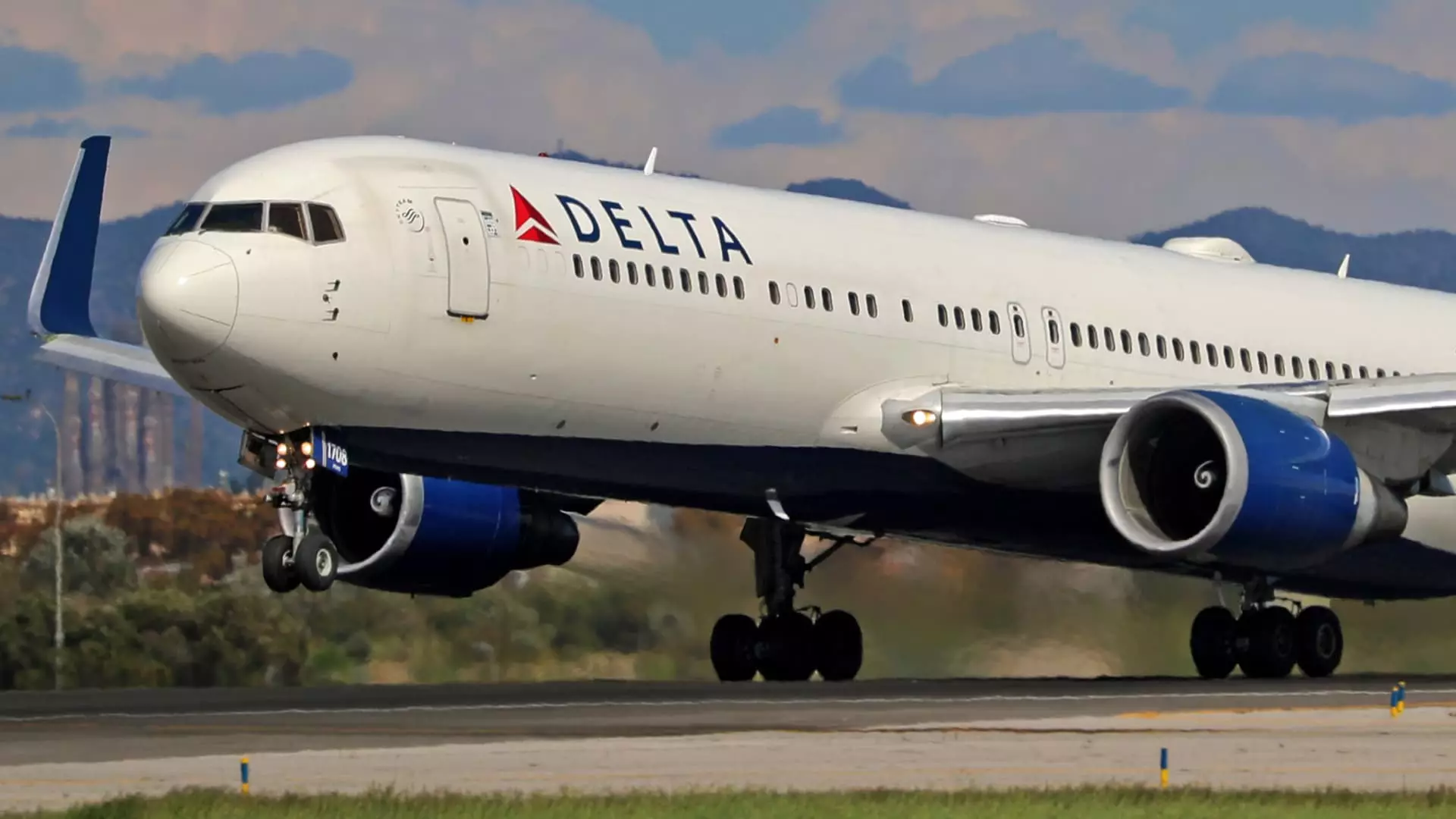The airline industry, once jubilant with the post-pandemic travel renaissance, is now staring into an unsettling abyss of dwindling demand. Recent reports spotlight a dramatic decline in travel bookings from Canada and a worrying dip in transatlantic flights, marking a stark shift from the exuberance that characterized the industry just months ago. Notably, the latest data suggests that bookings from the U.S. to Europe have plummeted by 13% compared to the previous year. To consider these figures merely as seasonal fluctuations would be dangerously naïve; they reflect a more significant sentiment shift that could redefine consumer behavior in the months ahead.
Consumers, as they reel from rising costs and economic uncertainty, seem to be reevaluating their trip budgets, opting instead for local getaways or postponing their travel plans entirely. This increasing risk aversion in the wake of global economic challenges has troubling implications for airlines, with executives across the sector bracing for earnings reports that may reveal disheartening truths about a market once bolstered by consumer eagerness for adventure.
Corporate Travel: A Casualty of Economic Policy
The corporate travel segment, which comprises a significant portion of airline revenues, is currently facing unprecedented turbulence. Political factors, particularly under President Trump’s administration and the introduction of global tariffs averaging 10%, have created an environment of uncertainty that enterprises cannot ignore. Companies are tightening their belts; layoffs are rampant, and with them, the demand for business travel crumbles. The fear is palpable among airline executives as they anticipate earnings calls fraught with questions about shifting corporate strategies.
The reality is that while higher-income travelers may continue to crave luxury travel experiences, the growing middle class is retreating from frequent corporate trips. This duality—the disparity between premium and economy-class prospects—could lead to a volatile market where airlines are unable to fill their flights without promoting unrealistic discounts or unappealing deals. In essence, the economic landscape is shifting towards an isolationist approach, stifling growth and narrowing profit margins.
Slumping Stock Market: A Reflective Dilemma
In tandem with faltering demand, airline stocks have experienced one of their worst downturns since 2020. The NYSE Arca Airline Index has taken a hit, with major carriers such as Delta, American Airlines, and United Airlines witnessing drops exceeding 30%. It begs the question—if investor confidence crumbles, what hope is left for recovery? These stock market trends are not simply a reflection of current demand but also evoke fears surrounding future profitability and corporate viability.
Investors, responding to these challenges, have downgraded stock ratings with alarming speed. Analysts seem to concur that the optimistic outlook for the airline industry may have been overly optimistic. Even Delta, labeled the most successful U.S. airline, is not immune to these pressures, reflecting a broader sentiment that the roaring travel rebirth may have been just a fleeting moment of prosperity.
Consumer Confidence: The Ghost of Thriving Travel
The cultural mindset around travel has also shifted dramatically. The conventional excitement associated with planning trips has given way to hesitance, as rising inflation undermines consumer confidence. A recent study from the Bank of America Institute indicates a noticeable decline in consumer enthusiasm for travel, echoing a hesitancy that suggests people are reluctant to book, or are opting to scale down their plans. This is an alarming contrast to the travel exuberance celebrated just a year ago.
Moreover, the fallout from recent natural disasters and weather anomalies has contributed to this wavering confidence. While this weather-induced uncertainty may be temporary, it nonetheless feeds into a broader narrative: a generation tired of inflation, reduced spending power, and political strife. It appears that the desire to escape remains, but the motivation to act on that desire has weakened significantly.
Airline Strategies: The Quest for Resiliency
As the landscape grows more complex, airlines are left grappling with the challenge of ensuring they can still lure travelers amidst the shifting tide. The call for resilient strategies is palpable; airlines are desperately modifying marketing tactics to attract those still eager for travel—predominantly wealthier customers indulging in premium services.
To navigate the headwinds, airlines might consider leveraging the allure of loyalty programs. By offering enticing rewards, they could potentially stimulate demand from frequent flyers and those carefully weighing their travel options. However, all these efforts to appeal to a discerning consumer economy may not be enough to reverse the overall decline. Each strategy carries both hope and inherent risk as airlines aim for steady occupancy rates while grappling with the inevitable economic pressures that loom.

